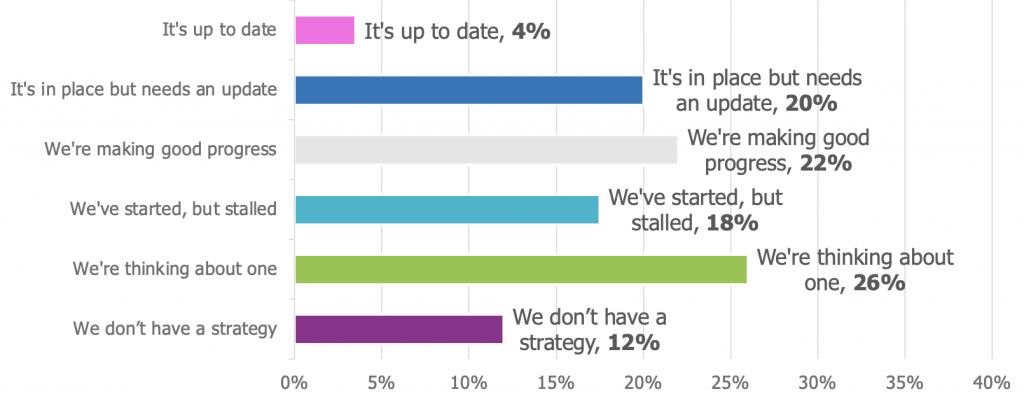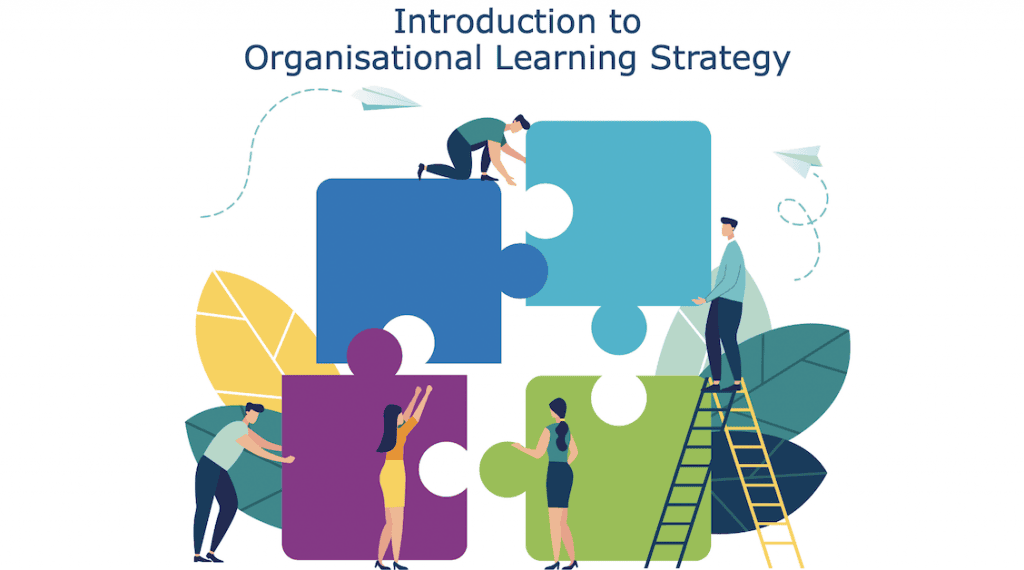This article has been co-authored by Michelle Ockers and Ravina Bhatia
While it’s always important to have a current organisational learning strategy, NOW is the perfect time to create or refresh your strategy. We’ve seen rapid, large-scale change in organisations the past 12-18 months. Clearly there was a need for Learning and Development (L&D) to support organisations to respond. And it created opportunity to make changes that many have aspired to for a long time. It’s time to consolidate and leverage these shifts by creating or refreshing your learning strategy– while the window is still open.
There is little practical guidance available on how to develop a high-impact organisational learning strategy. Learning Uncut is addressing this gap with a series of free monthly webinars, articles and resources. We recently ran the first of the webinar series, How to Create An Organisational Learning Strategy. To stay up to date with future webinars and resources subscribe to our Transform and Thrive newsletter via our blog home page.
What is an organisational learning strategy?
The term ‘learning strategy’ is used in at least two ways. It’s often used to describe the high-level design or approach that will be taken for a specific learning solution.
However, in the context we use it an organisational learning strategy is your overarching approach to learning in an organisation to support the implementation of the business strategy. It is not strategy for a specific learning solution, although it will inform the design of specific solutions or programs.
Why do you need a learning strategy?
Think of a learning strategy like a plan for building a house. Without a plan your house may not meet your needs and support your vision for your lifestyle. It can also lack structural integrity.
Similarly, a well-crafted learning strategy provides a strong framework to help you contribute to your organisation’s goals and strategy, and to create greater value. A coherent strategy ensures integrity in decisions about learning and approaches adopted to learning across your organisation.
A learning strategy provides principles and practices for learning that have been specifically shaped to meet the needs of your workforce, and potentially partners and customers – in a way that best suits them – and to motivate them to engage with learning.
Of course, it’s not just about creating engagement with learning. To get the most out of investments in learning, L&D leaders must take on a commercially strategic role within the organisation. In line with this, a robust learning strategy ensures that:
- Learning is fully aligned to business goals,
- Investment in learning adds value to your organisation,
- Your people have the required skills and knowledge to perform current roles well,
- They can reskill to provide workforce mobility and upskill to future-proof themselves and your organisation, and
- Employee engagement and retention improve as your people feel supported by the organisation.
Do you have an up-to-date learning strategy?
In our recent learning strategy webinars we’ve asked attendees what condition their learning strategy is in. Fewer than 5% have an up-to-date strategy, while 38% haven’t started creating a strategy. The graph below shows the full range of responses.

If you are one of the vast majority who do not have an up-to-date strategy be aware that there has never been a more critical time to create or refresh your strategy. Read on – and join our future webinars for valuable practical guidance.
Let’s look at what’s in a strategy
We’ll start with what is not in a learning strategy. It’s not a list all of the programs or courses you are going to run and content you are going to produce. In most instances it doesn’t include the key capabilities or skills that your organisation needs to develop. These belong in operational documents and work plans. While your strategy will need to be reviewed for currency annually, it should not change substantially unless there are significant shifts in your organisation or environment.
Let’s look at what should be in a learning strategy. There are nine key elements to include:
- Vision – A vision for learning that clearly communicates how your strategy will help your organisation to achieve it’s vision and strategy.
- Value proposition – This is a statement that defines the benefits that your learning strategy will provide and how you will do it well. You may have a series of value proposition statements for different key stakeholder groups. This helps to communicate ‘what’s in it for them’ in a way that is compelling and will attract them to engage with learning.
- Case for change – If your strategy is introducing significant changes you will need to outline the drivers for change and make a case for change to explain why the change is needed.
- Principles – A set of principles is required to guide consistent decisions and learning approaches. These principles do not mean that all learning for all audiences looks the same – just that decisions are being made in a consistent, coherent way. For example, if you are in a large organisation where multiple teams touch the same product one of your principles might be to design once for multiple audiences so that they receive consistent information and learning about the product.
- Pillars – These are three to four essential areas of action where shifts or improvement are required if your strategy is going to succeed. It may help to think of them as the key ‘battlefields’ that you must win to successfully implement your strategy. Pillars are different in each organisation, depending on your current state and desired future state. If you work in a highly regulated environment where there is a lot of upcoming change in regulation, then risk might be a pillar. In a different context innovation or partnerships might be pillars. Other common choices include culture, governance, capability, and technology.
- Success Indicators – It’s important to define success indicators to help you track and demonstrate progress toward realising the benefits of your strategy.
- Horizons – It typically takes 3-5 years to fully achieve the vision in your L&D strategy. Break this period down into shorter time horizons for implementation. Give each a name that reflects the key shift or outcome you aim to achieve in that period and detail plan the first horizon while giving yourself some flexibility in actions to be taken in the latter horizons.
- Operating model – Your operating model defines how L&D will work to deliver the value and outcomes described in the strategy.
- Business case – Your strategy will need to be endorsed by senior leaders in your business. Funding will often be required, which makes it essential to have to a solid business case for investment.
That sounds like a lot doesn’t it! It can sometimes feel a bit overwhelming or daunting to create an organisational learning strategy. However, if done well, you can create a strategy that has high engagement in your organisation before you even launch it.
Our next blog will outline common pitfalls and outline a proven end-to-end process to avoid them and create a learning strategy. For a preview of the principles that underly this process you can download our learning strategy checklist using this link.
To set you up for success, we have distilled our deep hands-on experience into a robust process and set of tools in our Strategy Builder service.
To give L&D Leaders a taste of our approach we invite you to book in for a free Strategy Health Check. If you are an L&D leader who values constructive reflection, reviews, and recommendations, then this offering from Learning Uncut is for you!
Your Learning Strategy Health Check consists of:
- An online Health Check survey (30 mins)
- A review of your current learning strategy, informed by survey responses (45 mins)
- A summary report and suggested next steps
If you’re ready to access high-value support with your learning strategy from our experts use this link to book your Learning Strategy Health Check.



2 comments
Annu Singh Kundu
A clear, precise, intriguing and thought-provoking piece. Well articulated.
Michelle Ockers
I’m pleased you found this useful Annu. Thank you for leaving a comment. Let me know if you have any follow-up questions about learning strategy.